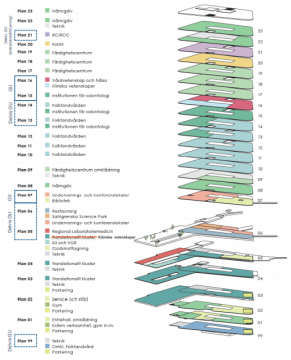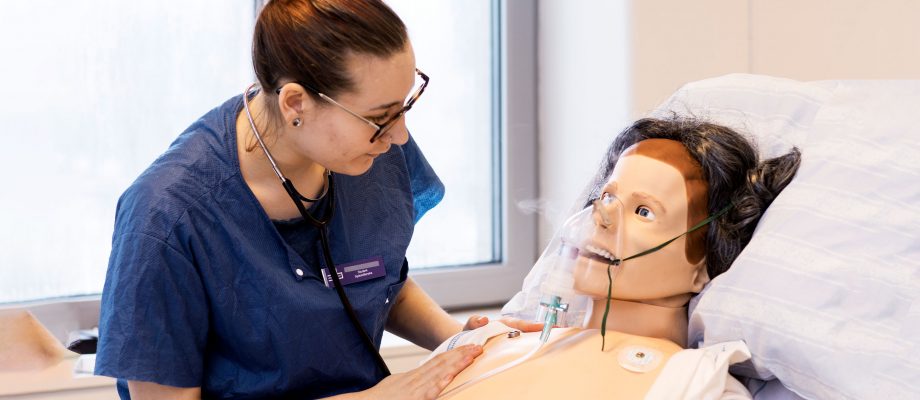SAHLGRENSKA LIFE. Planning for the new skills center at Sahlgrenska Life is progressing well. This clinical training platform is part of the life science initiative in Building 3 at Sahlgrenska Life. This shared resource between Sahlgrenska Academy and Sahlgrenska University Hospital will provide clinical skills training to students. Everything to ensure that they will be well prepared to their future careers.

Inter-professional learning
The skills center will also provide opportunities for joint team training involving students from various academic programs, known as inter-professional learning. The aim is to prepare for clinical work in teams, where different areas of expertise collaborate.
The Clinical Training Center (CTC), where students currently receive part of their training, needs to be replaced since it is housed in premises at Hälsovetarbacken that we intend to vacate. The idea of sharing a new joint skills center together with other medical care disciplines is not new. Hälso-Sam began discussing this in 2015. Over time, a clinical skills center was integrated into planning for the future Sahlgrenska Life and was included in pre-studies and program reviews. A joint working group conducted a new in-depth review in 2021.
Testing innovations and technology
For Sahlgrenska University Hospital (SU), the center will offer a setting to train staff. For example, the hospital may need to teach new surgical methods or practice existing methods in a simulated setting or to test innovations and technology. Similar collaborative test beds are often used in many industries to develop methods, processes and innovations. The skills center offers opportunities for the University, the medical care system and, by extension, other partners to develop and test medical care solutions that streamline and improve the quality of their work.
Revised assignment

Agneta Ekman, a senior lecturer at the Institute of Neuroscience and Physiology, was tasked with a special assignment for the undergraduate program. A natural part of this assignment was planning for future training premises. Together with lecturer Malin Lindberg from CTC Sahlgrenska Academy, she leads the planning for the center in cooperation with SU.
The group’s mission was recently revised to reduce the floor space from the 6,000 square meters across three entire floors of Building 3 to 4,000 square meters. The original idea was for Sahlgrenska Academy to pay half of the cost, but that SU would be the primary tenant. The University of Gothenburg and Sahlgrenska Academy now plan to rent their share of the space directly from the property owner.
Framework in place
“We are now planning based on the new directive with reduced floor space,” says Agneta. “Now that the framework is in place and we know the size of the overall floor space (much smaller than was originally envisaged), it is important to look at the nature of the premises and make them as multifunctional as possible. This will offer opportunities for more flexible use. It will also be necessary to have a smart booking system together with the medical care system to fully utilize the capacity of the center. I’m really looking forward to our new modern skills center, which will offer our students even better clinical training to prepare them well for their future careers.”
BY: HELEN EASTERLING











